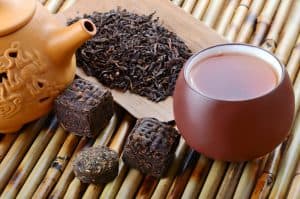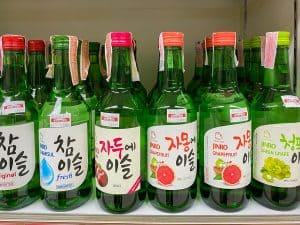
There is great debate among wine lovers about what exactly constitutes a Moscato. Some say it is a sparkling wine made from the Muscat Blanc grape, while others believe it can be either sparkling or still.
All this debate aside, we think that Moscato is best enjoyed chilled and served in a white wine glass.
So, you are probably wondering, how do you drink Moscato?
Moscato is a delicate wine, so it is important to serve it correctly. The ideal serving temperature for Moscato is between 45 and 50 degrees Fahrenheit. If your wine is too cold, it will taste sweet and flat. If it is too warm, the flavors will be muted, and you may not be able to taste the wine’s delicate aromas.
In this article, we will focus on what Moscato is, how to drink Moscato, the different types of Moscato, and what foods pair well with this type of wine.
What Is Moscato?

Every wine has a story, and Moscato is no different.
This wine’s roots can be traced back to the Middle Ages in what is now known as the Piedmont region of Italy. The Moscato Bianco grape is considered native to this region and is mentioned in documents dating back to the 13th century.
The name Moscato is derived from the Latin word for musky or perfumed.
This is fitting because the Moscato Bianco grape is known for its distinctive aroma of musky, honeysuckle, and jasmine.
The Moscato grape is native to Italy and is also known as Muscat Blanc. Moscato wines are made from this grape and can be either sparkling or still.
Moscato wines are usually sweet and have low alcohol content.
The process of making Moscato is different from other types of wine. For Moscato, the grape juice is fermented for a shorter period which preserves the natural sugars in the grape.
Moscato wines are typically bottled quickly after fermentation to retain their sweetness and carbonation.
How To Drink Moscato

Moscato is a delicate wine and should be served correctly.
Serve It at the Right Temperature
The rule of thumb is to serve Moscato wines chilled. The ideal serving temperature for Moscato is between 45 and 50 degrees Fahrenheit.
If your Moscato is too cold, it will taste sweet and flat. If it is too warm, the flavors will be muted, and you may not be able to taste the wine’s delicate aromas.
The best way to chill Moscato is in the refrigerator for about an hour. If you are in a hurry, you can pop the bottle into a bucket of ice water for 20 minutes.
Use the Right Glass
When drinking Moscato, it is important to use the right glass. The best glass to use is a white wine glass. This type of glass will allow the wine to breathe and will help to enhance the flavors.
For sparkling Moscato wines, use a flute glass. For still Moscato wines, use a regular white wine glass.
Pour It Correctly
When pouring Moscato, be sure to pour it slowly. This will help to preserve the carbonation in the wine.
Moscato wines are typically served in a flute glass which helps to keep the carbonation bubbles intact.
Pairing Moscato with Food
Moscato is a versatile wine and can be paired with many different types of food. Moscato is best enjoyed as an aperitif or with dessert.
If you are serving Moscato as an aperitif, try pairing it with light appetizers such as fruit, cheese, or nuts.
For a light starter, pair Moscato with melon or other fruit. Try pairing Moscato with salmon or other seafood for a more filling starter.
If you serve Moscato with dessert, it pairs well with fruity desserts, pastries, or even ice cream. For a classic pairing, try Moscato with peaches or nectarines.
For a more exotic pairing, try Moscato with mango or lychee.
The Different Types of Moscato

Moscato wines come in many different styles. Although there is sparkling and still Moscato, the type of Moscato refers to the sweetness level.
The sweetness results from how much sugar is left in the wine after fermentation.
The most popular types of Moscato, from sweetest to least sweet, are:
Asti Spumante
Asti is a sparkling wine that is light, refreshing, and the sweetest and most popular type of Moscato.
The alcohol content is relatively low, around 7-9%. Asti Spumante is made from the Moscato Bianco grape in the Piedmont region of Italy.
This wine is sparkling wine and is slightly sweeter than Moscato d’Asti. Asti Spumante has aromas of peach, apricot, and honeysuckle.
Moscato d’Asti
The king of Moscato wines is Moscato d’Asti. This is a semi-sparkling wine that is also sweet.
The alcohol content is lower than Asti, around 5%. This wine is also made from the Moscato Bianco grape in the Piedmont region of Italy.
Moscato d’Asti is a frizzante wine, which means it is slightly sparkling. This wine is light-bodied and has a lower alcohol content than other types of wine.
Moscato d’Asti is sweet with aromas of peach, apricot, and honeysuckle.
Moscato Bianco
This still wine is the least sweet of the three wines mentioned above. Moscato Bianco has an alcohol content of around 11%.
Aromas of peach, apricot, and honeysuckle are also present in this wine. Moscato Bianco derives its name from the Moscato Bianco grape that it is made from.
This wine is made in the Piedmont region of Italy and is a DOCG wine, the highest quality designation a wine can receive in Italy.
Takeaway
Drinking Moscato is a sensual experience. The wine’s delicate sweetness and aromas of peach, apricot, and honeysuckle make it the perfect wine to enjoy with dessert or as an aperitif.
When served at the correct temperature and in the right glass, Moscato is a delicious and refreshing wine.
Moscato wines are versatile and can be paired with many different types of food. The wine’s sweetness pairs well with fruit, pastries, and even ice cream.
Moscato is also a versatile wine and can be paired with many different types of food. Moscato is best enjoyed as an aperitif or with dessert.
No matter what you pair it with, Moscato is sure to please your palate. This delicious wine is the perfect way to celebrate any occasion.








